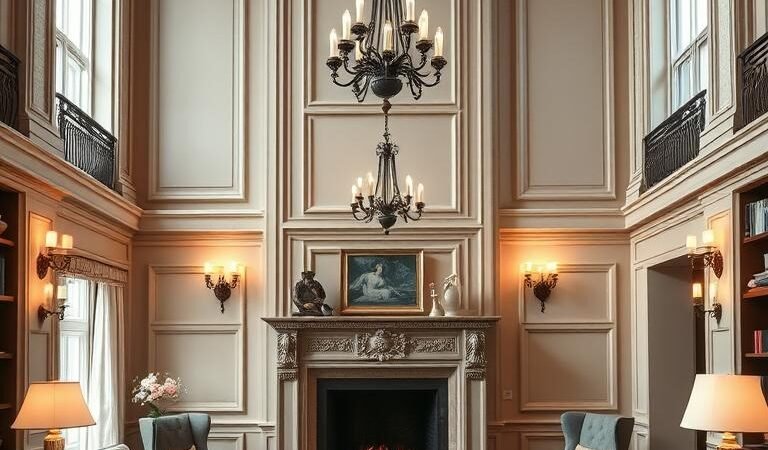Designing a home that feels both inviting and sophisticated doesn’t mean chasing fleeting trends. Studies show 68% of homeowners regret renovations tied to short-lived styles—much like swapping stilettos for flats after a season. Instead, enduring aesthetics, like Roman herringbone patterns or Sara Swabb’s philosophy of balancing history with relevance, create spaces that age gracefully.
Over a decade, design trends cycle in and out, but certain elements—hardwood floors, marble accents, and tailored silhouettes—remain staples. Many in their mid-30s shift from farmhouse charm to refined colonial touches, seeking a lived-in yet curated feel. The key? Investing in durable materials and smart layouts that adapt over time.
Key Takeaways
- Trend-chasing often leads to renovation regrets—opt for enduring styles.
- Design cycles repeat every 10 years, making timeless choices cost-effective.
- Durable materials like hardwood and marble offer long-term value.
- Blending historical inspiration with modern needs creates balanced spaces.
- Personal style evolves—design with flexibility in mind.
1. What Makes Classic & Timeless Decor Enduring?
History reveals why some design elements outlive trends, becoming staples in elegant homes. From Roman herringbone floors to 17th-century Chinoiserie ceramics, these pieces share a commitment to craftsmanship and balance. They adapt to new eras without losing their essence.
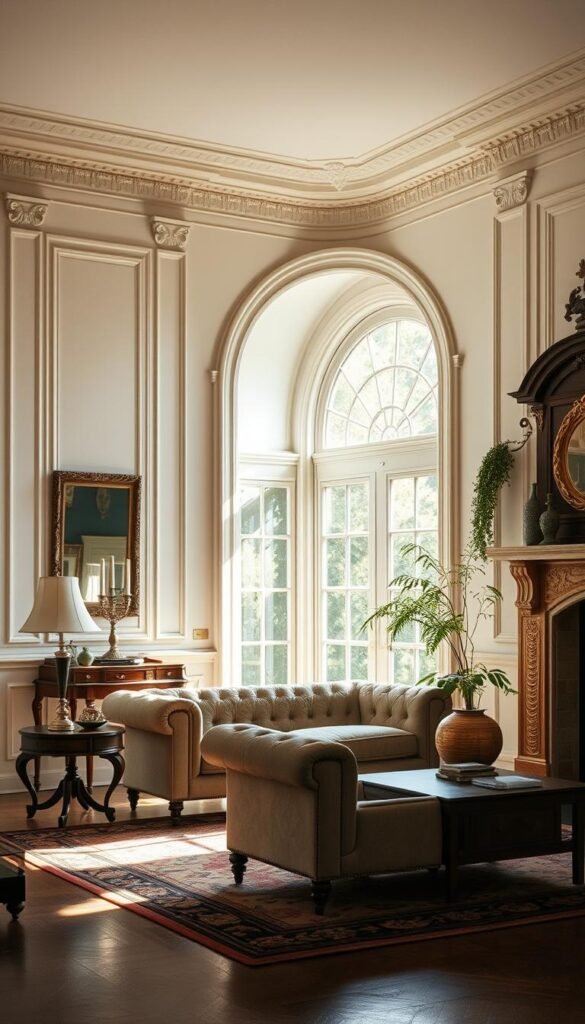
The Philosophy Behind Timeless Design
David Collins Studio’s 3:5:8 ratio proves symmetry isn’t just math—it’s visual harmony. Like Lucy Marsh’s antique blending strategy, it layers history with modernity. Material honesty, as Merlin Wright notes, is key: Shaker kitchens endure because they celebrate wood’s natural grain.
Benjamin Moore’s “dirty greens” palette shows how nuanced colors age gracefully. These muted tones—think mossy velvets or sage walls—avoid dating a space. Farrow & Ball’s Traditional Neutrals follow the same rule, offering shades that work in any period.
Why Trends Fade, but Classics Remain
Fast furniture fails within years, while solid wood tables last generations. Compare Joanna Gaines’ subway tiles to ancient Roman floors—one’s a trend, the other a tested technique. William Morris’ 19th-century prints still resonate because they prioritize artistry over novelty.
Chinoiserie ceramics exemplify this longevity. Their East-West fusion has thrived for 400+ years. Sean Symington’s fabric layering mirrors this idea, mixing textures that stand the test of time. The result? Spaces feel curated, not chaotic.
2. Foundational Elements of Timeless Interiors
Enduring interiors start with a thoughtful blend of colors, materials, and craftsmanship. These elements work together to create spaces that feel both fresh and familiar—like a well-loved book you return to year after year.
Neutral Color Palettes: The Backbone of Elegance
Neutrals are the unsung heroes of design. Little Greene’s tonal scales, like Lime White, mirror the soft hues of historic English estates. For contrast, Benjamin Moore’s Wrought Iron adds depth to doors and trim without overwhelming a room.
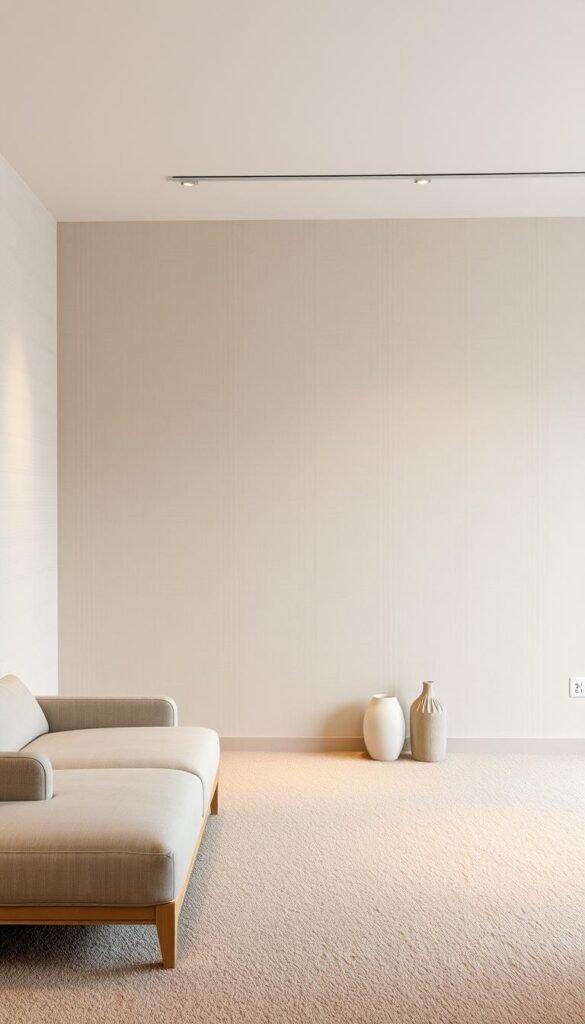
Ruth Mottershead’s 3-layer wall strategy proves neutrals aren’t flat. Start with a warm base, add texture via grasscloth, then accent with matte black frames. The result? A room that whispers sophistication.
Natural Materials: Wood, Stone, and Linen
Nature’s textures age beautifully. Neptune’s solid oak furniture uses hand-carved joinery—drawers glide smoothly even after decades. For floors, Minwax’s Provincial stain enhances red oak’s grain, while salvaged barn wood beats particle board in durability tests.
Linen’s 200-thread-count weave outlasts synthetic blends, resisting pilling. Pair it with marble countertops (hint: baking soda lifts stains) for a kitchen that matures like fine wine.
High-Quality Craftsmanship Over Fast Furniture
Invest in pieces that tell a story. A wool rug with 1,200 knots per square inch handles foot traffic gracefully. IKEA’s $20 curtain hack mimics pinch pleats, but nothing rivals custom drapes’ heavy lining and precise folds.
Storie Collective’s raw materials approach celebrates imperfections—knots in wood, variations in stone. These quirks add character, proving quality isn’t about perfection, but longevity.
3. Classic Paint Colors That Never Go Out of Style
The right paint colors can transform a room from forgettable to unforgettable—without chasing trends. Whether it’s a moody accent wall or a creamy neutral backdrop, the best shades adapt to evolving tastes while maintaining elegance.
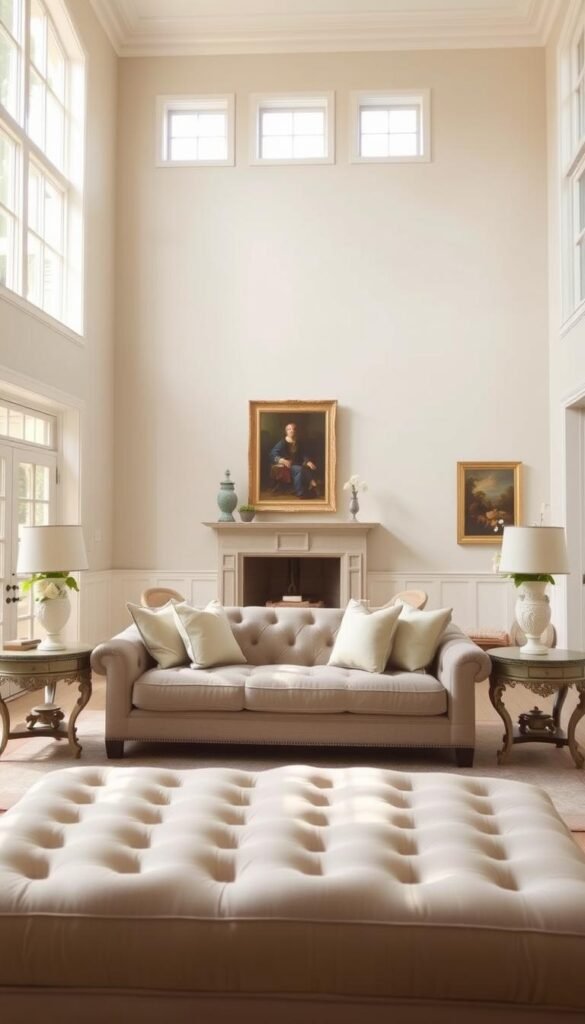
Benjamin Moore’s Wrought Iron for Bold Contrast
With an LRV (Light Reflectance Value) of 6.5, Wrought Iron absorbs light, creating dramatic depth. Pair it with matte finishes on trim or ceilings to modernize traditional spaces. Professional painters recommend a 3:1 sheen ratio—eggshell walls with semi-gloss trim—to highlight its iron-gray undertones.
Soft Whites and Creams for Versatile Walls
Farrow & Ball’s Old White leans into green undertones, mimicking aged limestone. For warmer options, compare:
- Chantilly Lace: Crisp and clean (LRV 90.4)
- Swiss Coffee: Honey-kissed (LRV 81.9)
- Alabaster: Soft vanilla (LRV 82)
These shades work with both vintage furniture and modern art, proving their flexibility.
Navy Blue: The Timeless Accent Hue
Navy’s CMYK breakdown (100, 85, 5, 35) ensures richness without overpowering. Psychologically, it evokes stability—ideal for entryways. For a curated look, pair it with Morris & Co. wallpapers or other timeless paint colors like warm whites.
4. Furniture Choices for a Timeless Home
Furniture anchors a home’s aesthetic—choosing enduring pieces ensures longevity beyond fleeting trends. Whether it’s a vintage dresser with hand-carved dovetails or a minimalist sofa, each item should balance beauty and resilience.
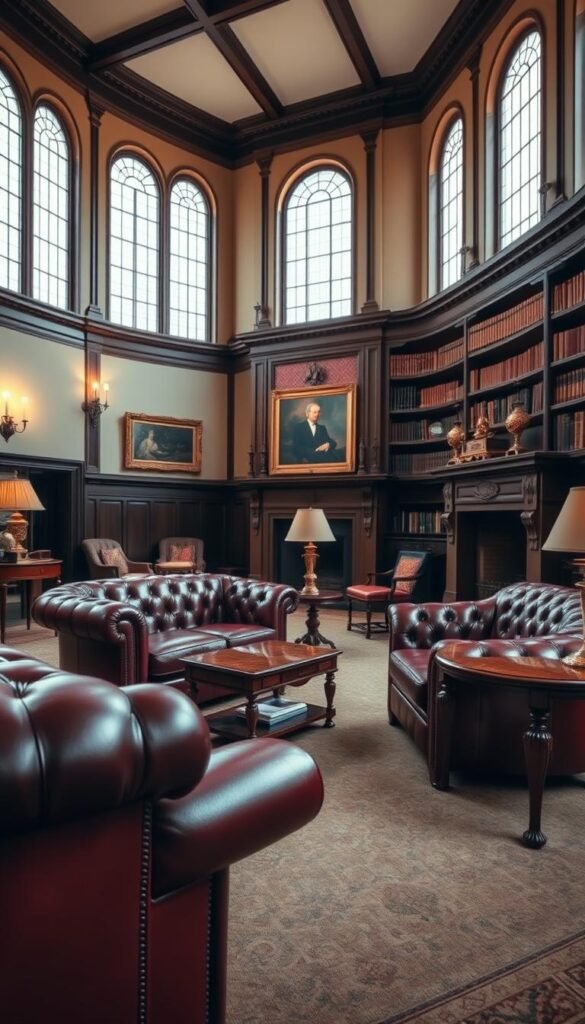
Vintage and Antique Pieces with History
Authentic vintage furniture reveals its quality in the details. Look for these hallmarks in dressers or buffets:
- Dovetailed drawers: Interlocking joints prevent sagging.
- Mortise and tenon construction: No nails or glue—just precision.
- Solid wood surfaces: Sand away scratches; veneer chips permanently.
Facebook Marketplace gems often hide under layers of paint. Search using eBay operators like “antique mirror -reproduction” to filter modern knockoffs.
Clean Lines and Simple Silhouettes
Urban Rhythm’s Lennox chair proves simplicity endures. Compare sofa arms:
- Waterfall arms: Soft curves suit traditional spaces.
- Track arms: Sharp lines anchor modern rooms.
For seating, the 17° seat pitch standard ensures comfort. Pair with timeless furniture pieces like Shaker-style benches for cohesive flow.
Investing in a Statement Dining Table
The Alpine table’s messmate wood grain tells a story. Use the 1/3 rule: Table width should be ⅓ of the room’s width. Professional reupholstery costs $40–$80 per yard but triples a chair’s lifespan.
For antique care, blend beeswax and mineral oil into wood butter. It nourishes without synthetic shine—because true designer touches age with grace.
5. Textiles and Fabrics That Stand the Test of Time
Fabric choices define a room’s character as much as furniture or paint. The right textiles balance durability with beauty—think linen’s crinkled texture or velvet’s rich depth. Whether you prefer plaids or pinch pleats, investing in quality fabrics ensures your space ages gracefully.
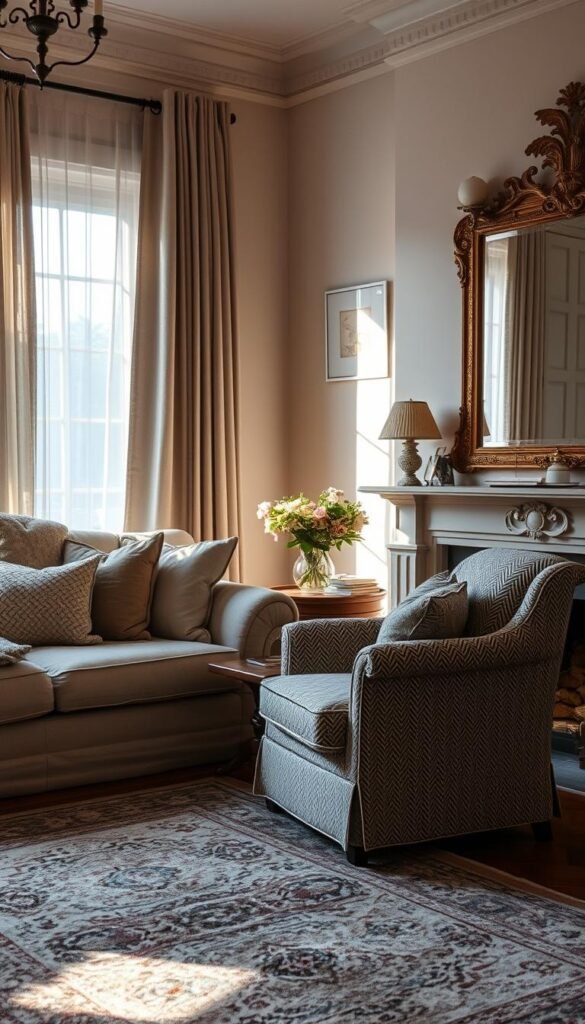
Plaid and Striped Patterns for Lasting Appeal
Plaid and stripes transcend trends because they play with scale and color. A large-scale buffalo check feels rustic yet refined, while pinstripes add subtle structure. For cohesion, match the dominant hue in the pattern to your wall or upholstery.
Linen Curtains: Elegant and Adaptable
Linen’s moisture-wicking properties make it ideal for humid climates. Unlike synthetics, it softens with each wash. Opt for a 2:1 fullness ratio—twice the fabric width of your window—for relaxed gathers that filter light beautifully.
The Luxury of Pinch Pleat Drapes
Designer pinch pleats use precise spacing (usually 4–6 inches) for uniform folds. Blackout liners block 99% of light, while dimout versions diffuse glare. For historic charm, look for jacquard weaves with natural dyes.
| Fabric Type | Durability (Martindale Rubs) | Best Use |
|---|---|---|
| Linen | 15–20k | Curtains, slipcovers |
| Velvet | 30k+ | Upholstery, accent chairs |
| Performance Cotton | 50k+ | High-traffic areas |
Pro tip: Oka’s olive-green velvet chair pairs perfectly with striped linen drapes. This way, you layer textures without overwhelming the eye.
6. Architectural Details That Elevate Your Space
Architectural details are the unsung heroes of a well-designed home, adding depth and character effortlessly. These elements—whether carved into crown molding or laid in herringbone patterns—create a sense of permanence that transcends trends.
Crown Molding and Traditional Trim
Beef up plain walls with crown molding. A 45-degree miter saw angle ensures seamless corners. For a layered look, pair it with quarter-round baseboards—ideal for hiding uneven gaps.
Historic wainscoting follows a golden ratio: 1/3 wall height. Limewash beams? They age like fine wine, revealing subtle texture over time.
Herringbone Floors: A Centuries-Old Trend
Crisscrossed herringbone whispers history—its Roman origins prove its staying power. Unlike chevron, herringbone’s staggered joints hide wear better. Pro tip: Radiant heating works flawlessly beneath these floors.
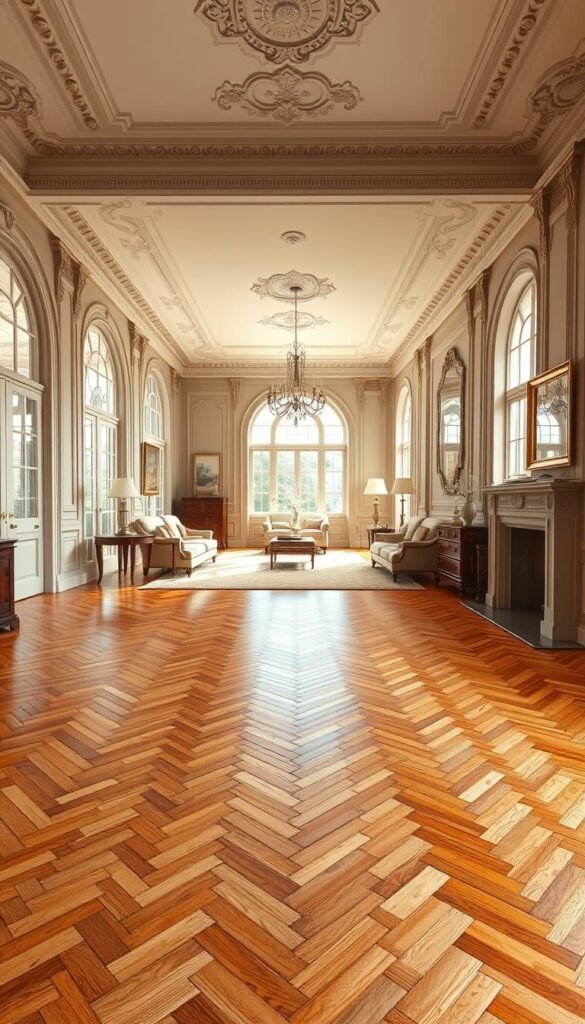
Restore original floorboards with a gentle sanding. Encaustic tiles? Their hand-painted charm outlasts porcelain in high-traffic areas.
Subway Tiles in Kitchens and Bathrooms
The 3/32″ grout rule keeps subway tiles crisp. For steam showers, epoxy grout resists moisture. Compare spacing options:
- 1/16″: Modern, tight look
- 1/8″: Classic balance
Pair with matte black fixtures for a timeless interior that feels fresh yet familiar.
7. Mixing Old and New for a Layered Look
Blending eras in home design creates depth—like a well-edited museum where Renaissance portraits converse with abstract sculptures. The secret lies in intentional juxtaposition. When an heirloom side table shares space with a geometric floor lamp, both pieces gain new relevance.
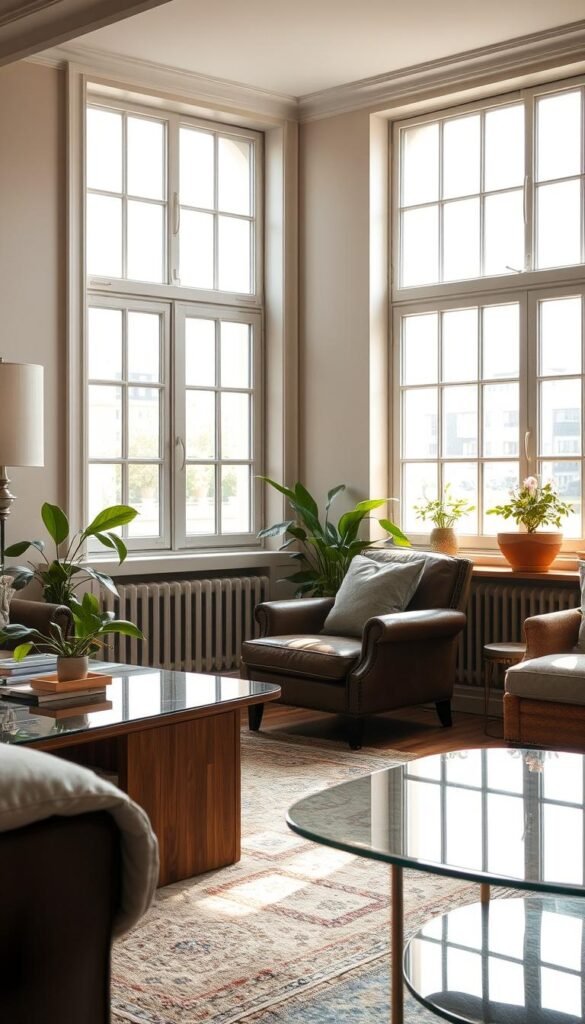
Pairing Antique Mirrors with Modern Art
Gilded vintage mirrors reflect contemporary paintings beautifully. The Gold Rub ‘n Buff technique revitalizes worn frames—just rub the wax onto carved details with a soft cloth. For gallery walls, use hanging systems with adjustable wires to accommodate heavy pieces.
Urban Rhythm’s Rufus sculpture demonstrates how matte finishes complement aged brass. Install LED picture lights (300 lumens minimum) to highlight textures. Museum gel prevents art from shifting while allowing easy repositioning.
Balancing Vintage Furniture with Contemporary Lighting
A 1940s oak desk shines beneath a minimalist pendant. Convert vintage lamps to LED with voltage adapters—halogen bulbs emit UV rays that fade fabrics over time. Track lighting works best when spaced 24-36 inches apart.
Observe the 3:7 ratio: 30% antique furnishings to 70% modern elements. This way, rooms feel curated rather than cluttered. Acid-free matting protects artwork from acidic degradation in mixed collections.
The Role of Personal Collections
Display heirloom china behind UV-filtering glass to prevent yellowing. Bronze develops richer patina than brass—wipe monthly with microfiber to maintain its warmth. For humidity control, maintain 40-50% RH levels using smart hygrometers.
Group inherited silver with abstract ceramics for visual tension. The contrast between polished surfaces and rough textures tells a richer story than matching sets ever could.
Conclusion: Creating a Home That Lasts a Lifetime
A well-crafted home tells a story—one that evolves with you. Start with five anchor pieces: solid wood floors, paneled doors, a statement dining table, tailored upholstery, and layered lighting. These investments form the backbone of a space that ages gracefully.
Follow Sara Swabb’s mantra: “Decorate smarter, not harder.” Over 12 months, refresh textiles, rotate art, and hunt for vintage gems. Ask sellers: “Was this handcrafted?” “Are joints doweled or glued?” “Can it be refinished?”
Your walls should whisper history. Download the heritage home audit checklist to assess your space’s potential. Every five years, swap accessories—not the foundation. As Urban Rhythm notes, “Trends make noise; classics sing.”
